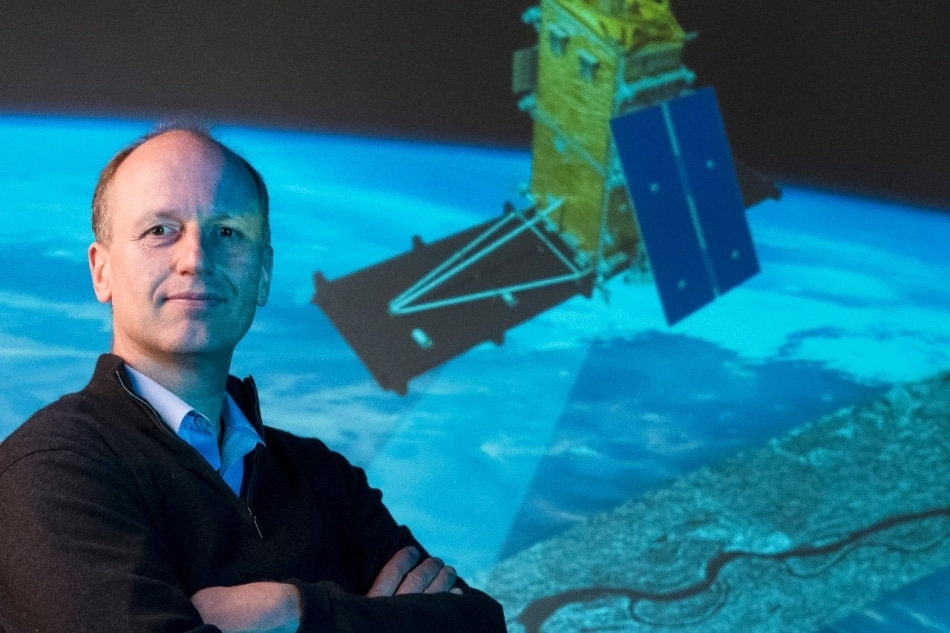Mar 1 2017
A new particle physics detector lab—where SFU researchers involved in ATLAS, the world’s largest physics experiment, can carry out research—and a specialized sensor to improve airborne monitoring for security, wildfires and other disasters, are among new tools that will help grow world-class research at SFU.
 Engineering science professor Bernhard Rabus is one of two SFU researchers to receive Canada Foundation for Innovation's John R. Evans Leaders Fund awards. His grant will further development of SAR technology while physicist Bernd Seltzer (below) will create a new particle physics detector lab. (Credit: SFU)
Engineering science professor Bernhard Rabus is one of two SFU researchers to receive Canada Foundation for Innovation's John R. Evans Leaders Fund awards. His grant will further development of SAR technology while physicist Bernd Seltzer (below) will create a new particle physics detector lab. (Credit: SFU)
These research initiatives are among more than 200 projects nationally receiving nearly $52 million in funding from the Canada Foundation for Innovation’s John R. Evans Leaders Fund, announced today. The fund helps universities attract and retain some of the world’s best researchers by equipping them with the tools needed to stay on the cutting edge.
SFU physics professor Bernd Stelzer is setting up a modern, development and construction facility for detecting particle physics, at SFU’s Burnaby campus and at the national TRIUMF laboratory for particle and nuclear physics in Vancouver.
Stelzer and others at SFU have been involved in the global ATLAS project, based at CERN, Switzerland, since 2002. Experiments at CERNS’s Large Hadron Collider (LHC), the world’s largest high-energy particle accelerator, and the Higgs boson discovery in 2012, have put renewed attention on particle physics.
“The SFU facility means we can develop, construct and test new silicon-based particle physics detector components for the LHC era and beyond,” says Stelzer. “Such components are critically needed for upgrading the ATLAS detector, to continue and improve its excellent performance in the future and increase the available data.”
Stelzer analyzes data from collisions that occur in the LHC. The new facility enables scientists to fabricate components with improved capabilities, and to reconstruct the paths of charged particles during the ‘high-luminosity’ collision rates in the LHC.
The facility will enable researchers to collect more data more quickly, which will enhance the opportunity for discovery, by exploring the detailed properties of the Higgs boson and searching for new phenomena at the forefront of experimental particle physics.
“This high-profile, international project provides a rare opportunity for hands-on training and employment of young Canadians, and will have an enduring impact by inspiring both technological innovation and education for all citizens about the nature of our universe," says Stelzer.
Meanwhile engineering scientist Bernhard Rabus will acquire the specialized sensor he needs to develop new Synthetic Aperture Radar (SAR) technology that will improve B.C.’s maritime surveillance and security and fisheries and environmental regulation enforcement. SAR images show details of land and water, and 3D information about vegetation, snow, icebergs, buildings, and ships.
The new SAR technology can be used to develop new ways of monitoring wildfires, landslides and earthquakes, resulting in jobs that strengthen B.C.’s mining, forestry and transportation industries.
About the size of a small carry-on suitcase, the new technology will be mounted under a small airplane or drone, where it will transmit harmless microwave radiation and then record the backscatter from the Earth’s surface, as images.
“These images reveal details and characteristics about the land and water on the Earth’s surface, and the volume layers or structures close to it, such as snow, vegetation, human infrastructure, sea ice, and ships,” says Rabus. He also holds the Industrial Research Chair in Synthetic Aperture Radar, supported by the Natural Sciences and Engineering Research Council (NSERC) and MacDonald, Dettwiler and Associates Ltd. (MDA), a Richmond-based aerospace and communications company.
Rabus says the technology will also advance Interferometric SAR (InSAR), which compares two or more SAR images that have been acquired over the same area but at different times, to derive subtle changes between the images. “These are critical technologies for applications such as maritime surveillance and environmental monitoring,” he says.
Source: http://www.sfu.ca/